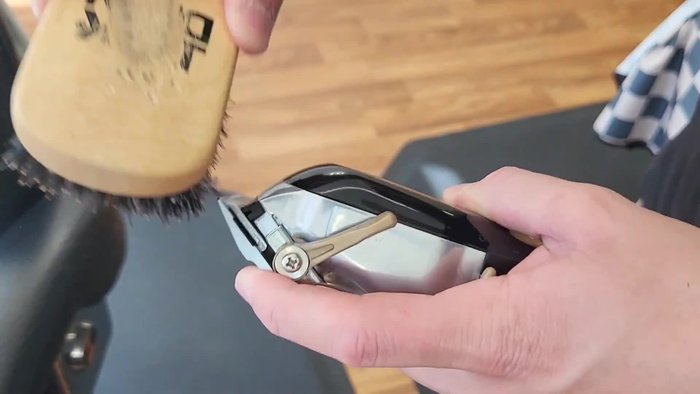Keeping your hair clippers clean and well-oiled isn't just about aesthetics; it's crucial for maintaining their performance and longevity. Dull blades lead to uneven cuts, pulling, and potential skin irritation, while neglected clippers are prone to overheating and premature failure. Regular maintenance ensures a smooth, efficient cutting experience every time, preventing frustrating snags and ensuring your clippers remain a reliable tool for years to come. Investing a few minutes in proper cleaning and lubrication will significantly extend the life of your investment and improve the quality of your haircuts.
This ultimate guide will walk you through a comprehensive step-by-step process for thoroughly cleaning and oiling your hair clippers, regardless of the brand or model. We'll cover everything from the right cleaning tools and techniques to the best type of oil to use and how to properly lubricate the moving parts for optimal performance. Let's get started!
Preparation and Safety Guidelines
- Hair clippers
- Cleaning brush
- Clipper oil
- Towel
- Always unplug your clippers before cleaning or oiling to prevent electric shock.
- Never immerse your clippers in water or any liquid. Use a damp cloth for cleaning.
- Use only clipper-specific oil. Other oils can damage the motor and blades.
Step-by-Step Instructions
Clean the Clippers
- Remove all hair from the clippers using the cleaning brush.

Clean the Clippers Prepare for Oiling
- Hold the clippers correctly (blades facing down) to prevent oil from entering the mechanism.

Prepare for Oiling Oil the Clippers
- Turn on the clippers.
- Apply a small amount of oil to the top of the blades where they meet, and to the two bottom back bits.


Oil the Clippers Clean Excess Oil
- Wipe off excess oil with a towel.


Clean Excess Oil
Read more: Mastering Trimmer Blade Adjustment for a Perfect Cut
Tips
- Don't hold the clippers vertically when oiling, as this can cause oil to enter the internal mechanism and damage the clippers.
- Always hold the clippers with the blades facing downwards when cleaning or oiling to prevent oil from entering the mechanism.





